Explore the Pros and Cons of Balancing Beads
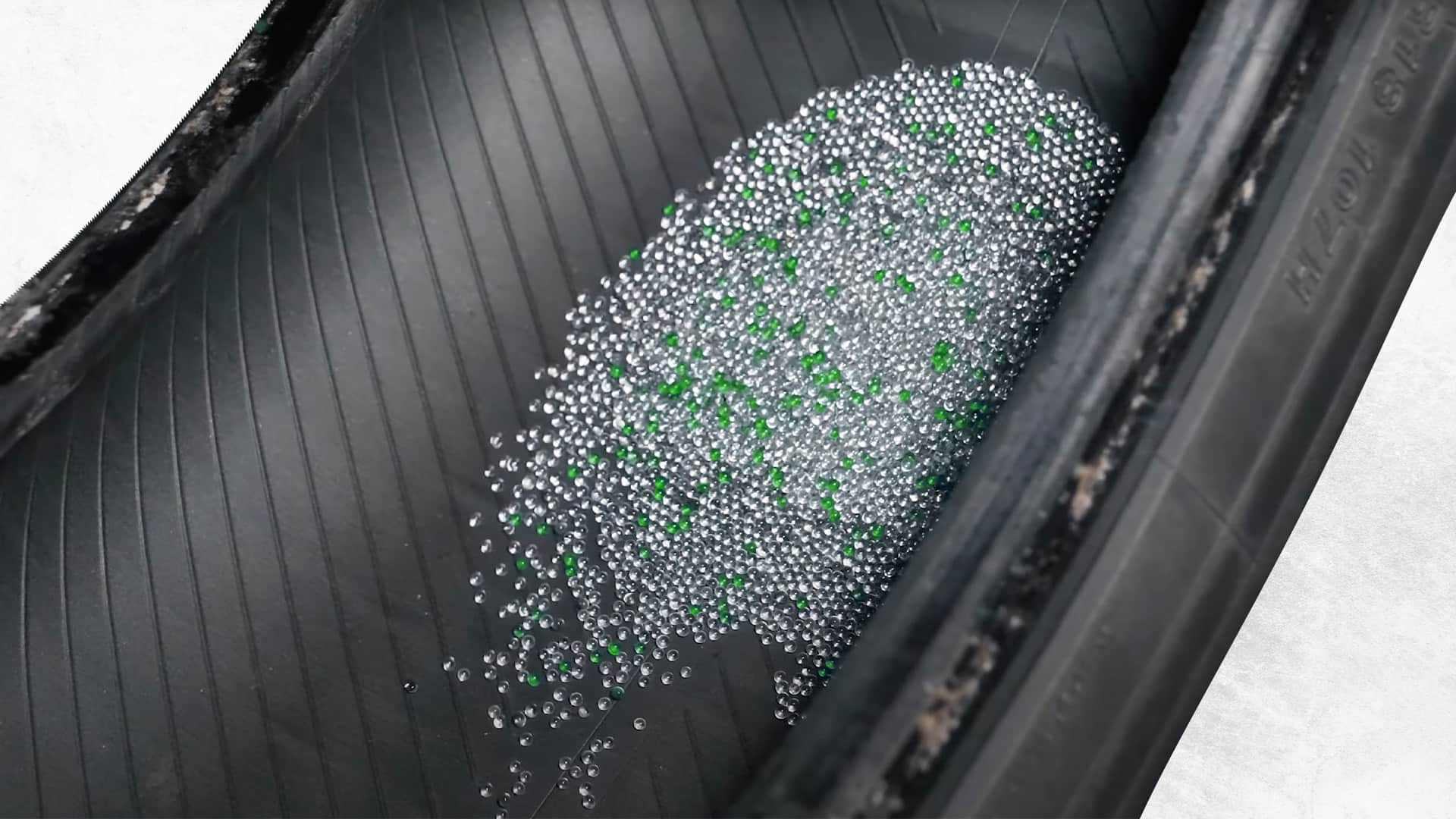
As a vehicle owner or enthusiast, you have probably come across the term wheel balancing and its significance in maintaining vehicle performance and safety. Wheel weights and tire balancing beads are two common methods used for this purpose. There are numerous methods for accomplishing this, but the two most popular are tire balancing beads and wheel weights.
When deciding which approach suits your car best, certain considerations should be taken into account. This post will highlight the distinctions between these two merthods as well as the pros and cons of balancing beads.
How Do Balancing Beads Work?
The secret to balancing beads is in their construction – small granules usually made of glass, ceramic, or metal. Once installed, the beads move around inside the tire as it rotates, automatically adjusting their position accordingly. They locate the heaviest areas on the wheel and distribute their weight evenly throughout those parts.
This clever trick allows balancing beads to fix any imbalances in your tires, taking care of vibrations that can cause discomfort or wear and tear to your vehicle.
Pros of Balancing Beads
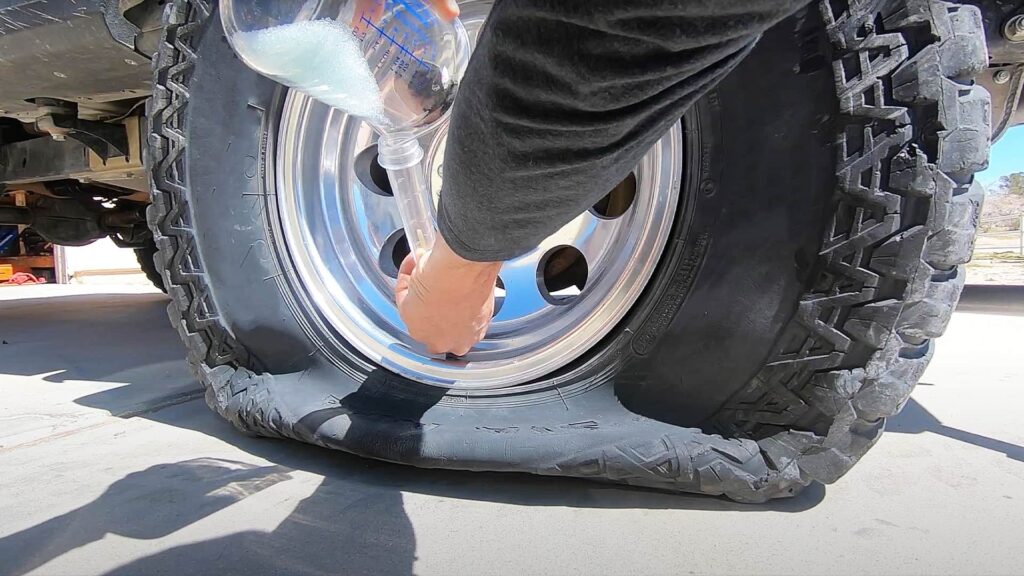
Cons of Balancing Beads
While balancing beads have their benefits, there are some things to be aware of:
Wheel Weights vs Balancing Beads
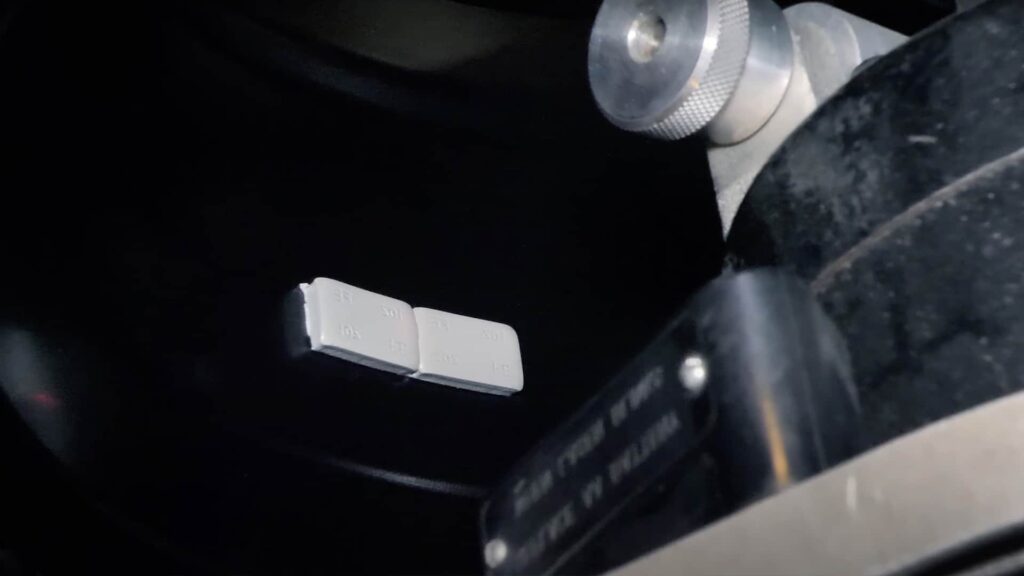
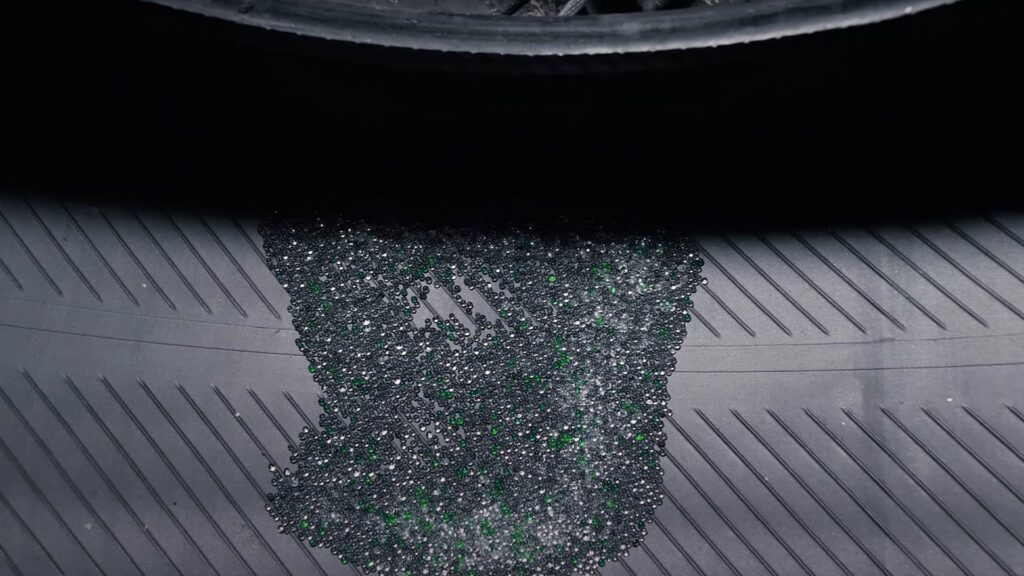
Wheel weights are small lead or zinc pieces that you can affix to the outer rim of your wheels. They come in various shapes and sizes, including tapered, clip-on, and stick-on.
In contrast, balancing beads function as an alternative internal balancing approach. These circular glass or ceramic beads are inserted into the tire and distribute weight evenly by moving towards the heavier side of the tire. Later on, we will delve into some benefits associated with using balancing beads.
Myths about Balancing Beads
Will the TMPS sensors be damaged by Balancing Beads?
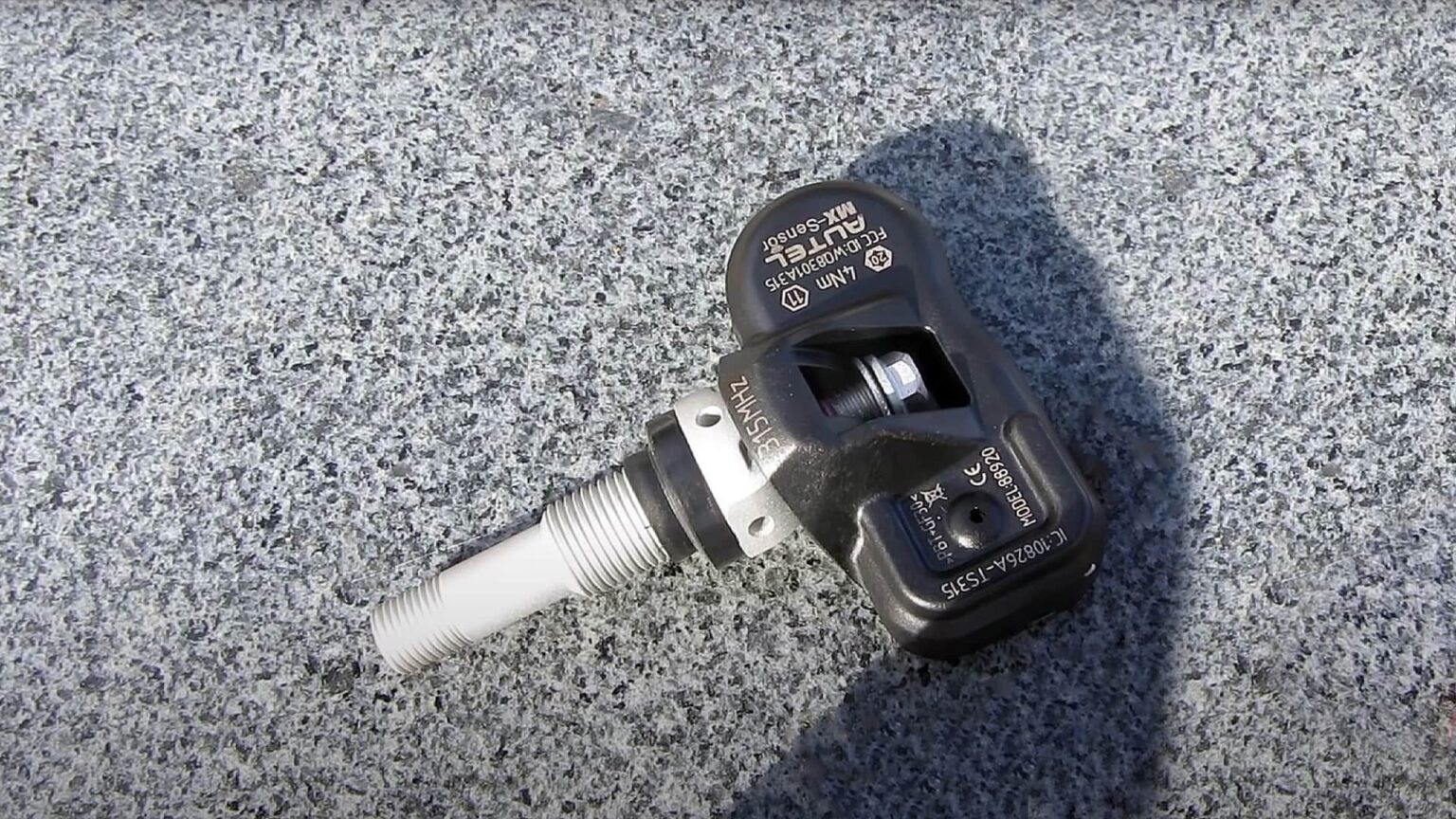
There should never be an issue with TPMS sensors when using balancing beads. Balancing beads are electrostatically charged to stabilize against the rubber in your tires. This means that even if you rapidly reduce your speed from 60 miles per hour to just 10, your TPMS will not be affected.
Regarding the application process, if the vehicle has TPMS sensors, it is recommended not to inject the beads through the valve stem, and dismantling the tire is required. However, if the TPMS is not present, the beads can be injected directly without the need to dismount the tire.
Do Balancing Beads Only Working At High Speeds?
Another concern some people have is whether balanced tires only work at high speeds. This isn’t true. Any kind of object or substance in a tire – from ceramic beads to plastic beads and balance rings – will distribute itself through inertia when you hit speeds of around 45 mph.
Can Balancing Beads Clump Together?
There’s no need to worry about clamping. Many companies which produce balancing beads have solved this problem by coating the balancing beads with silicone so moisture stays out while maintaining sphere perfect symmetry.
In Which Cases Do Balancing Beads Work Best?
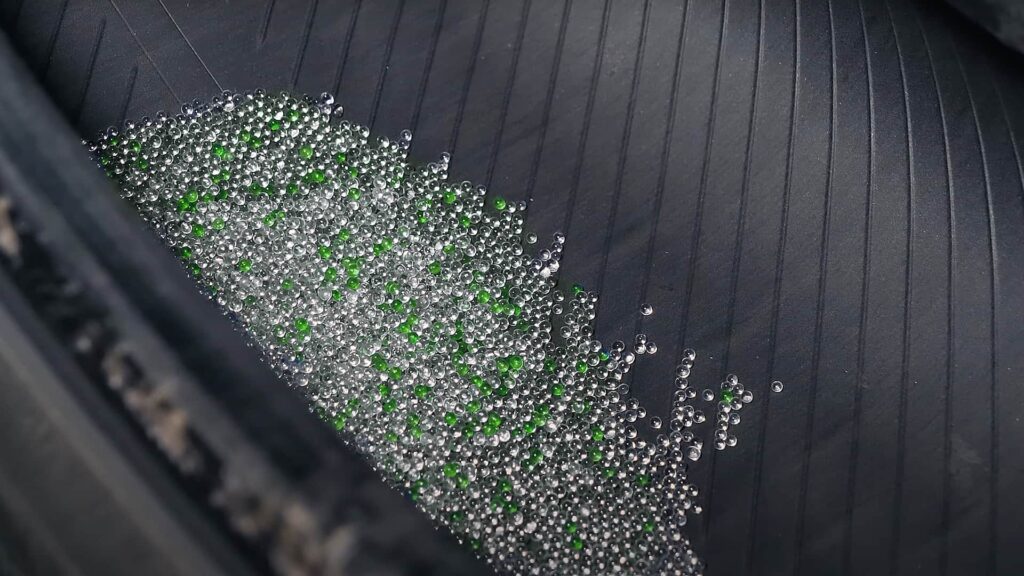
Balancing beads work perfectly for larger tires, such as those found on trucks or RVs, where imbalances can be more common.
However, you may not get the same results with smaller tires or those that have particularly large imbalances. In such cases, traditional wheel weights are a better option. It’s all about choosing the right method based on your tire size and balance!
Related Reading: Do New Tires Need To Be Balanced?
Using Balancing Beads: Step-by-Step
- Determine the correct amount of balancing beads needed: The amount of balancing beads required depends on the size and weight of your tire. Refer to the manufacturer’s guidelines or consult with a tire expert for guidance.
- Prepare the tire: Prior to adding balancing beads, ensure that your tire is clean and dry. Remove any existing wheel weights from the rim as well as the valve core.
- Pour in balancing beads: Add the right amount of balancing beads into your tire, pouring them gradually and uniformly around it using either a special dispenser tool or funnel.
- Inflate the tire: Install back the valve core, inflate your tire till it meets recommended pressure levels, and ensure that it sits correctly on your rim.
- Check balance: Do a test drive to assess if there is any vibration or pull on one side while driving – this would suggest you need more balancing materials added or readjustment done respectively. If everything runs smoothly, you’re good to go!
How To Remove Balancing Beads?
If you have balancing beads in your tires and need them removed, there are some options available:
- Deflate and pour out: The simplest method is deflating the tire and removing the valve core to let the beads drain out. This approach may cause some mess and be time-consuming if all of the beads don’t come out.
- Seek professional assistants: Taking your tires with balancing beads still in them to a professional mechanic or tire shop can help safely remove the tire from the wheel and subsequently remove all the balancing beads.
Balancing Beads Chart
Check out the balancing beads chart below by ESCO.
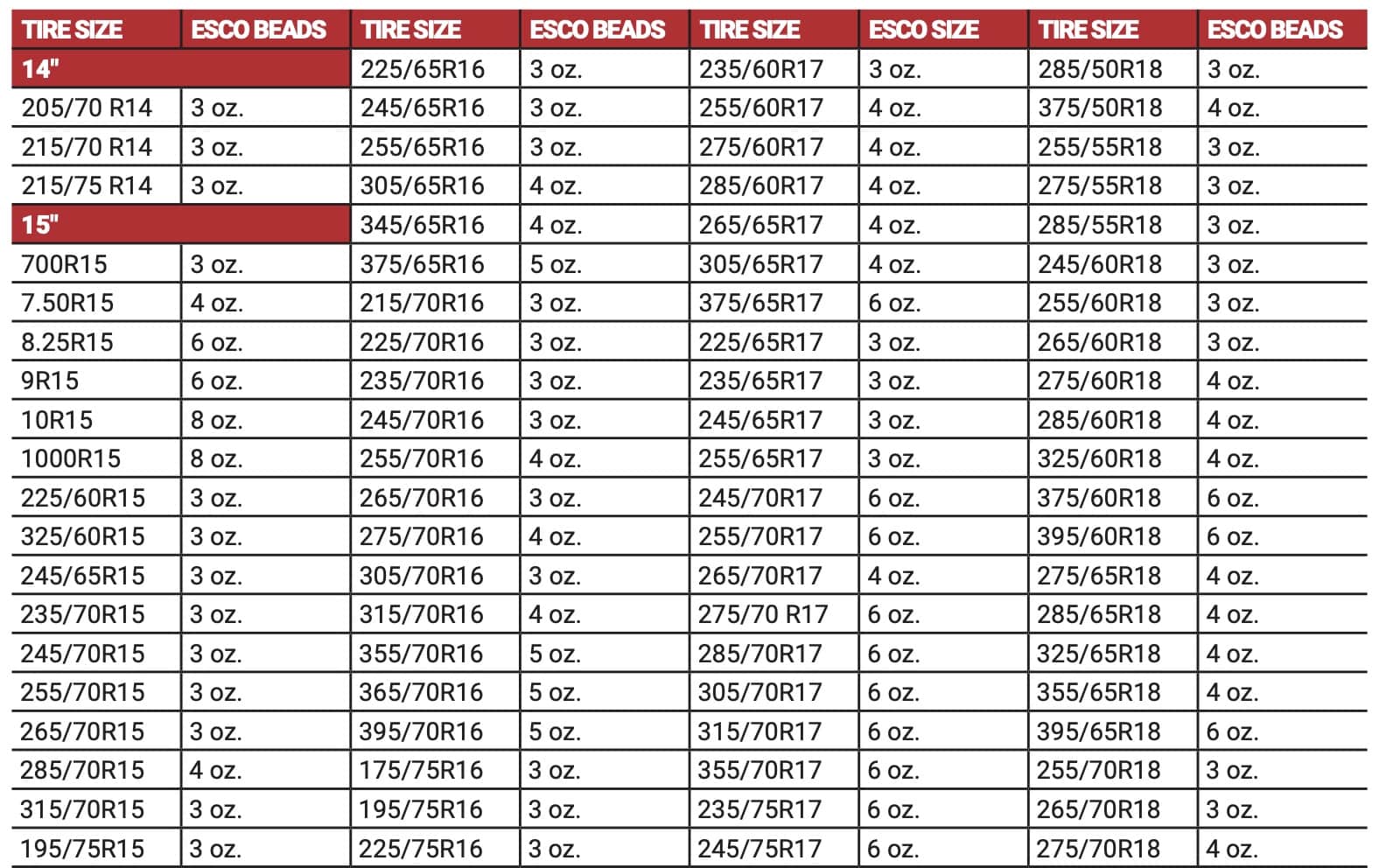
FAQs
Can You Use Balancing Beads And Weights Together?
It is not recommended to use both balancing beads and weights together on your tires as they could interfere with each other, disrupting the tire’s balance that may cause uneven wear or even damage to the vehicle.
What Is The Lifespan Of Balancing Beads?
The good news is that balancing beads are built to last just as long as your tires. Since these beads are typically made from durable materials, their lifespan usually matches that of the tire itself. So, you can expect them to stay put for as long as you have your existing set of wheels, without worrying about frequent replacements!
Can You Put Too Many Balancing Beads In A Tire?
Yes, it’s possible to put too many balancing beads in a tire. When you exceed the recommended amount, they could accumulate together and disturb the balance of the tire. This circumstance may cause vibrations or poor handling and even ruin your tire or wheel.
How Many Balancing Beads Should Be Used?
The answer lies on various factors such as tire size and type. Every maker has their own set of guidelines and recommendations for specific amounts of balancing beads per tire size. Normally, 1-2 ounces per inch of tire width is suggested for optimum results.
Do Balancing Beads Work At Highway Speeds?
Yes, balancing beads are designed to function effectively at any speed, including highway speeds. In fact, higher speeds can even help to distribute the beads more evenly throughout the tire, resulting in even better balance.
